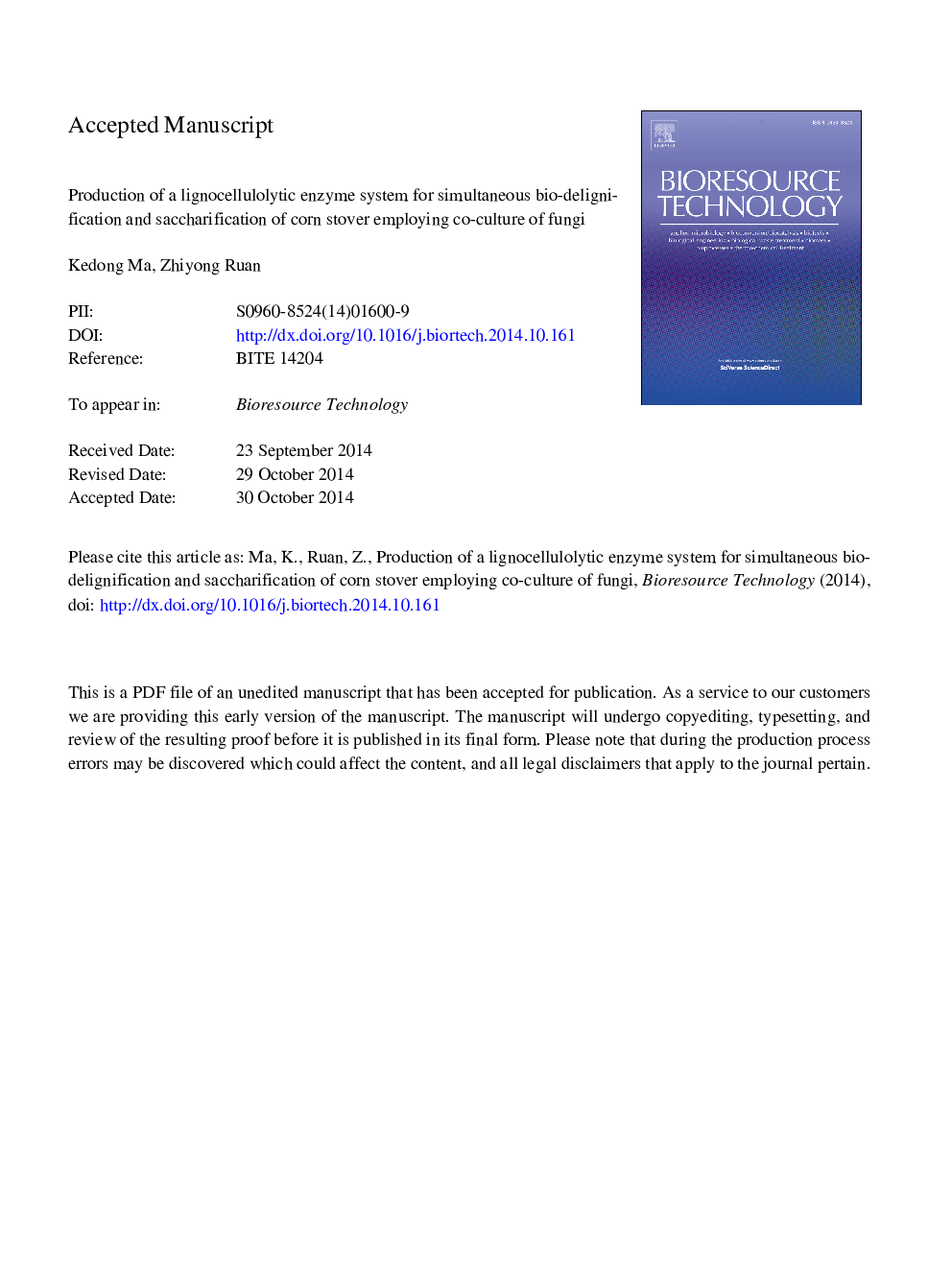| Article ID | Journal | Published Year | Pages | File Type |
|---|---|---|---|---|
| 680298 | Bioresource Technology | 2015 | 39 Pages |
Abstract
Aiming at improving the efficiency of transferring corn stover into sugars, an efficient lignocellulolytic enzyme system was developed and investigated by co-cultivation of the Coprinus comatus with Trichoderma reesei in a single bioreactor. The results showed that the lignocellulolytic enzyme activities of the co-culture exceeded that of the monoculture, suggesting synergistic interaction between two fungi. The highest laccase activity from the co-culture was 2.6-fold increase over that of the C. comatus monoculture and reached a peak 3Â days earlier. The maximum delignification obtained was 66.5% and about 82% of the original polysaccharides were converted into fermentable sugars by simultaneous bio-delignification and saccharification process. Correlation analysis showed that sugar yields were directly proportional to the lignin degradation. Our results suggested that co-fungi cultivation was a valuable technique for corn stover bioconversion, which could produce high efficiency of lignocellulolytic enzyme system as a cheaper alternative to commercial enzymes for industrial utilization.
Related Topics
Physical Sciences and Engineering
Chemical Engineering
Process Chemistry and Technology
Authors
Kedong Ma, Zhiyong Ruan,
